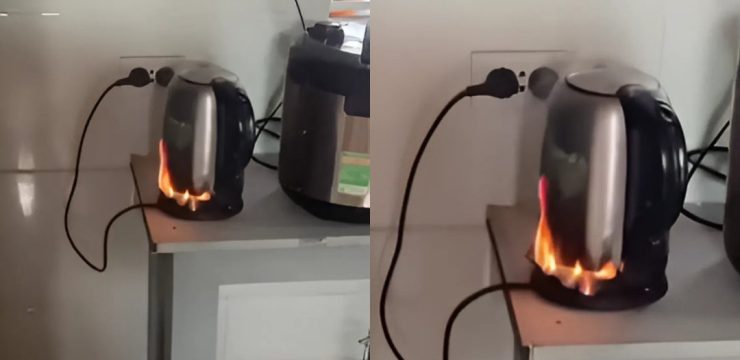Smoking has long been a part of human culture, but as science has advanced, the devastating effects of this habit have become impossible to ignore. Cigarettes are far more than just a source of nicotine—they are chemical cocktails filled with substances that harm your body in profound ways. Let’s uncover what exactly you’re consuming every time you light up and explore the broader consequences of smoking.

1. Cadmium: A Poison from Batteries
Cadmium, a heavy metal found in battery production, is highly toxic. When inhaled through cigarette smoke, it accumulates in your body and increases the risk of kidney damage and cancer.
Also Found In: Batteries, paints, and coatings.
2. Butane: Lighter Fluid in Every Puff
Butane, used in lighter fluid, is a flammable gas that contributes to the toxicity of cigarette smoke. It can cause respiratory issues and affect your overall health.
Also Found In: Gas for lighters, aerosols, and refrigerants.
3. Methane: Sewer Gas in the Mix
Methane, a gas commonly found in sewer systems, also makes its way into cigarette smoke. Though less harmful than other chemicals, its inclusion underscores the disturbing nature of what smokers inhale.
Also Found In: Natural gas, landfills, and swamps.
4. Arsenic: A Notorious Poison
Arsenic, often associated with pesticides, is present in cigarette smoke. Long-term exposure can lead to cancer, cardiovascular disease, and diabetes.
Also Found In: Pesticides, wood preservatives, and industrial chemicals.
5. Ammonia: Toilet Cleaner Turned Additive
Ammonia, found in many household cleaners, enhances nicotine absorption in cigarettes. It irritates the respiratory system and worsens conditions like asthma.
Also Found In: Cleaning products, fertilizers, and refrigeration systems.
6. Methanol: Rocket Fuel for Your Lungs
Methanol, a toxic alcohol used in rocket fuel, is another harmful component of cigarettes. Exposure can cause neurological damage and even death.
Also Found In: Antifreeze, windshield washer fluid, and solvents.
7. Hexamine: The Barbecue Lighter Connection
Hexamine, used in barbecue lighters, releases toxic fumes when burned. Inhaling it via cigarette smoke adds to respiratory and systemic toxicity.
Also Found In: Camping fuel tablets, adhesives, and antiseptics.
8. Stearic Acid: Candle Wax for Your Throat
Stearic acid, a fatty acid found in candles, contributes to the overall harm caused by smoking, even if it’s less toxic on its own.
Also Found In: Cosmetics, soaps, and food additives.
9. Acetic Acid: Vinegar’s Sharp Edge
Acetic acid, the main component of vinegar, is present in cigarette smoke. Prolonged exposure can irritate your respiratory system.
Also Found In: Vinegar, food preservatives, and industrial chemicals.
10. Toluene: Industrial Solvent in Every Drag
Toluene, a solvent found in paint thinners, can cause dizziness, headaches, and long-term neurological damage when inhaled.
Also Found In: Paints, adhesives, and chemical manufacturing.
11. Nicotine: The Addictive Culprit
Nicotine is the addictive agent in cigarettes, stimulating dopamine release and creating dependency. This addiction is a major barrier to quitting.
Also Found In: Insecticides and nicotine replacement therapies.
12. Carbon Monoxide: A Silent Killer
Carbon monoxide, a poisonous gas, reduces the oxygen-carrying capacity of your blood, leading to cardiovascular issues and an increased risk of heart disease.
Also Found In: Car exhaust fumes and faulty gas appliances.
The Health Consequences of Smoking
Smoking damages nearly every organ in your body, contributing to diseases like cancer, heart disease, and respiratory illnesses. It significantly reduces life expectancy, with long-term smokers losing years off their lives.
Secondhand and Thirdhand Smoke: Hidden Dangers
- Secondhand Smoke: Exposure to cigarette smoke affects nonsmokers, increasing their risk of cancer, heart disease, and respiratory issues.
- Thirdhand Smoke: The residue left on surfaces long after the smoke has cleared can harm children and pets, making it a persistent health hazard.
Effective Ways to Quit Smoking
Quitting smoking is challenging but achievable with the right tools and support:
- Nicotine Replacement Therapy (NRT): Patches, gum, and lozenges can reduce withdrawal symptoms.
- Medications: Prescription drugs like bupropion and varenicline can help manage cravings.
- Counseling and Support Groups: Behavioral therapy and peer support offer emotional assistance.
- Lifestyle Changes: Exercise, healthy eating, and stress management are crucial to success.
Understanding the toxic substances in cigarettes highlights the urgency of quitting. Every puff introduces a dangerous array of chemicals into your body. Awareness and action are the first steps toward a smoke-free life.





